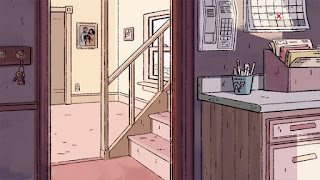In-depth Look of The Hero's Journey
The Hero's Journey;
(The Path of the Hero's Journey; the quest is often shown as a circle, as it begins and ends in the same world, only the characters may be changed.)
The Hero's Journey is a narrative pattern seen in many stories and often adapted to visual media as a way of have characters and stories that the audience can relate to. In the Hero's Journey, there are twelve stages to this narrative that allow it to flow well;
The Ordinary World; the hero is seen in their everyday life.
The Call to Adventure; the initiating incident of the story.
Refusal of the Call; the hero experiences some hesitation to answer the call.
Meeting the Mentor; the hero gains the supplies, knowledge and confidence needed to commence the adventure.
Crossing the First Threshold; the hero commits wholeheartedly to the adventure.
Tests, Allies and Enemies; the hero explores the special world, faces trails and makes friends and enemies.
Approach to the Innermost Cave; the hero nears the centre of the story.
The Ordeal; the hero faces the greatest challenge yet and experiences death and rebirth.
Reward; the hero experiences the consequences of surviving death.
The Road Back; the hero returns to the ordinary world or continues to an ultimate quest.
The Resurrection; the hero experiences the final moment of death and rebirth so they are pure when the re-enter the ordinary world.
Return with the Elixir; the hero returns with something to improve the ordinary world.
The Three Acts
The Hero's Journey is broken down into three acts, in which the sequence of events are laid out accordingly in how they effect the story and allow it to have a beginning, middle and end. The stages are set up in a way that the main character has a cause to undertaking this journey or quest; it allows a build up of tension at the middle stage and finally a gripping climax at the end.
(The Acts; The stages are often grouped together in order to build tension or further the story.)
The Archetypes
Archetypes are characteristics or qualities that can be seen in certain characters throughout a story. The are given to roles in order to further the narrative of a storyline or to develop a certain character's personality traits. Often times a character may display numerous Archetypes within them.
(The Core Archetypes; There are many different Archetypes seen in storytelling, the Archetypes are given many different names also, however there are often recurring ones.)













































